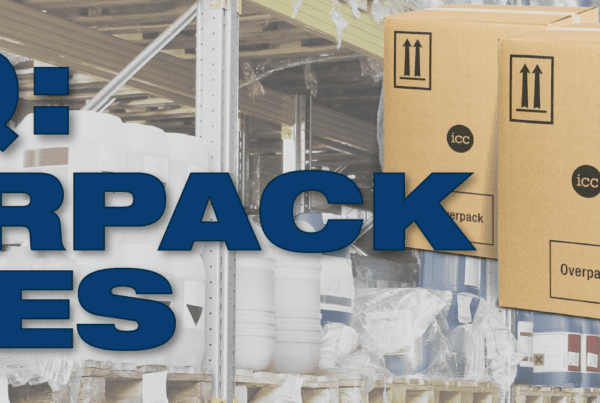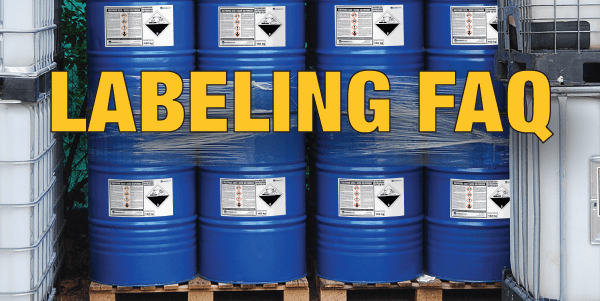What is GHS? How does the Globally Harmonized System affect your workplace regulations.
What is GHS?
GHS refers to the United Nations (UN) Globally Harmonized System of Classification and Labelling of Chemicals.
The GHS will establish new rules for hazardous chemicals in transportation, workplace use and consumer use, as well as special rules for pesticides. GHS also includes new Safety Data Sheet (SDS), or Safety Data Sheet (SDS), requirements and new hazard symbols. It comprises standards for:
- Classifying chemicals
- Symbols for hazards
- Labeling requirements
- Safety Data Sheet requirements
The UN published GHS in its publication known as the ‘Purple Book’. This publication can be purchased here.
Why GHS?
Currently, throughout the world there exist inconsistences between the various (national and regional) systems that control the classification of chemicals. GHS began as a result of the recognition by the United Nations (UN) for the need to harmonize these separate systems between the countries, and even within individual countries. It is meant to “harmonize” existing systems by establishing a unique system for identifying hazardous materials and giving warnings to users.
It is hoped that GHS will improve safety, decrease supplier costs, and generally make international shipment and sales of chemical products easier, as well as ensure that people worldwide receive the same basic standard of protection when using these products.
Who will be affected by GHS? Who has to comply with GHS?
GHS affects any company who has chemicals in the workplace. All employers with hazardous chemicals in their workplaces must have labels and safety data sheets for their exposed workers, and train them to handle the chemicals appropriately.
What will the new GHS ruling affect?
Classification – GHS will establish a common system of chemical classification.
Labeling – GHS will establish new labeling provisions, including standardized pictograms, signal words and hazard statements
Safety Data Sheets (SDS) – Safety Data Sheets (SDS) to become Safety Data Sheets (SDS). The GHS SDS has 16 sections in a set order, and information requirements are prescribed.
Does GHS concern the Transportation of Dangerous Goods or Hazardous Materials?
No, it is a workplace rule, although some of the classification changes, for flammables, toxics and environmental hazards have been somewhat aligned in the regulations (e.g. IMDG)
What is "the purple book"?
The UN published GHS in its publication known as the ‘Purple Book’. The first edition of the GHS, which was intended to serve as the initial basis for the global implementation of the system, was approved by the Committee of Experts at its first session (11-13 December 2002) and published in 2003. Since then, the GHS has been updated, revised and improved every two years as needs arise and experience is gained in its implementation.
The fourth revised edition of the GHS (GHS Rev.4) takes account of the amendments adopted by the Committee of Experts at its fifth session (10 December 2010) which were consolidated in document ST/SG/AC.10/38/Add.3. These amendments include, inter alia, new hazard categories for chemically unstable gases and non-flammable aerosols; further rationalization of precautionary statements, and further clarification of some of the criteria to avoid differences in their interpretation.
While governments, regional institutions and international organizations are the primary audiences for the GHS, it also contains sufficient context and guidance for those in industry who will ultimately be implementing the requirements which have been adopted.
What are the deadlines (transition period) for adopting the new GHS regulations for employee training?
ICC Compliance Center was incorporated in 1987. For more than 35 years, ICC has been serving customers who handle, offer for transport or transport hazardous materials / dangerous goods.
Do all employees need to be trained?
OSHA believes that effective training is a key part of hazard communication. All employees must be informed of the presence of hazardous chemicals and the operations where they are used in the work place. While written information is important, as in the specific workplace implementation of the program (the location of the SDS, chemical list, workplace labeling system, etc.), it is training that provides an opportunity to explain specific data, measures to detect, procedures to follow and equipment that workers can use to protect themselves from these hazards.
The revised standard continues this same effort, but emphasizes the need to train specifically on the new label elements and the format of the SDS. Training is required at the time of their initial work assignment and whenever new chemical hazards for which the employee has not been trained are introduced into their work area.
Does ICC offer GHS training?
Yes, ICC will offer GHS training in various degrees and formats to accommodate and facilitate your transition to and implementation of GHS.
Training options will include, public courses held at our offices, in-house at your facility, live and recorded webinars, and self-teach methods.
In accordance with the above requirements, ICC will offer various GHS training. Click here to view our course list.
Please visit our training schedule for more information or contact our friendly training coordinator.
What are the deadlines (transition period) for adopting the new GHS regulations for Systems and Processes?
What are the implications of GHS on my SDSs?
GHS system has revised Safety Data Sheet (SDS), or SDS, requirements.
GHS 16-section format for the SDS is as follows:
- Identification
- Hazard(s) Identification
- Composition/information on ingredients
- First-aid measures
- Fire-fighting measures
- Accidental release measures
- Handling and storage
- Exposure controls / personal protection
- Physical and chemical properties
- Stability and reactivity
- Toxicological information
- Ecological information
- Disposal considerations
- Transport information
- Regulatory information
- Other information
Will I have to update my SDSs?
Yes, the HAZCOM 2012 SDS will be a 16-section document. In addition, your product will need to be reclassified under the GHS system.
If I send my SDSs to ICC, what is the turnaround time for getting it back?
It depends on many factors, including if we have authored your SDS previously and how many need to be created. We will also need complete full disclosure including exact concentrations. Contact our Regulatory department for a quotation and present lead-times.
We only have a black and white printer, can we be GHS compliant with existing equipment?
The GHS pictograms must be printed in two colors, red and black. There are various options to get the two colors you need. You can buy pictogram labels and stick them on your labels or you can buy preprinted stock with the red borders. Contact us for more information and suggestions on what might work best for your situation.
Can you recommend a printer that is GHS compliant?
We offer a two color CAB printer that will allow you to print black and red, therefore your labels will be in compliance with the regulations. We have other suggestions including preprinted stock that might work as well. Please contact us to discuss the best solution for you and your company.
How does OSHA regulate "articles" under the revisions to HAZCOM 2012?
An Article [as defined in 1910.1200(b)(6)(v)] means a manufactured item other than a fluid or particle: (i) which is formed to a specific shape or design during manufacture; (ii) which has end use function(s) dependent in whole or in part upon its shape or design during end use; and (iii) which under normal conditions of use does not release more than very small quantities, e.g., minute or trace amounts of a hazardous chemical (as determined under paragraph (d) of this section), and does not pose a physical hazard or health risk to employees. Articles as such are not regulated by the hazard communication standard.
Articles have not been affected by the March 26, 2012 final rule.
Where can I get my questions answered about OSHA's new GHS ruling?
ICC offers a GHS/Regulatory help desk exclusive to its customers. Please contact 855-734-5469 to determine your eligibility for assistance.
You can also visit OSHA’s website at http://www.osha.gov/
For more information, quick references, fact sheets and examples.





